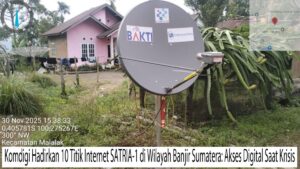On the night of December 31, 1999, the world held its breath. Not because of dazzling fireworks or celebrations in major cities, but out of fear of a digital apocalypse—a terrifying scenario in which computers failed to understand time, financial systems collapsed, power grids shut down, and the modern world came to a halt. The culprit? A simple computer bug now known as the Y2K Bug.
What Was the Y2K Bug?
In the early days of computing, storage was extremely limited and expensive. To save space, engineers recorded years using only two digits—for example, “84” for 1984. However, when the year changed from 1999 to 2000, computers read “00” as 1900, not 2000.
Imagine a banking system reading a loan’s due date as 1900, or medical devices failing to recognize their operating schedule. The consequences could be catastrophic. Navigation systems, flight schedules, ATMs, even power plants were at risk—all because a computer “got confused” about the year.
A Global Panic
The media dubbed it the “digital doomsday.” Governments and private companies across the globe braced for system failures. People feared widespread outages—broken ATMs, grounded airplanes, failing hospital equipment. Some even stockpiled food and water, preparing for the worst as if a natural disaster were imminent.
US President Bill Clinton signed the Year 2000 Information and Readiness Disclosure Act to support transparency in addressing the issue. Globally, over $300 billion USD was spent updating systems to become Y2K compliant.
Indonesia’s Response
Indonesia wasn’t idle. The government formed a national Y2K Task Force to monitor key sectors such as power, banking, telecommunications, transportation, and oil and gas. Garuda Indonesia even had executives fly on midnight flights to demonstrate their confidence in the system’s safety.
Local media closely followed the preparations. Reports highlighted how PLN (state electricity company), Pertamina, Bank Indonesia, and others worked to ensure that Y2K wouldn’t disrupt essential services.
What Actually Happened?
In the end, there were almost no significant problems during the shift to the year 2000. ATMs worked. Flights continued. There were no widespread blackouts. Banking systems functioned smoothly. According to Kompas reports, “Indonesia’s skies were clear of Y2K bugs.”
Some people later argued that the Y2K scare was overblown. But experts countered that the lack of disaster was proof that global preparation and collaboration paid off. The threat was real—but it was stopped before it could cause harm.
Lessons from a Disaster That Never Happened
The Y2K Bug is a powerful reminder that small details in digital systems can have massive impacts. Since then, developers have taken system reliability and date handling much more seriously. One lasting legacy of Y2K was heightened awareness of the need for software audits, cybersecurity, and routine system updates.
Today, discussions have shifted to newer threats—like the Year 2038 Problem, where 32-bit systems may run out of time capacity. However, the world is more ready this time.
Y2K is a tale of technological cooperation, worldwide fear, and a quiet triumph that prevented digital anarchy. An apocalypse that never came—because humans beat it first.





